Get inspired by the native planting projects below!
Don’t want your hometown to get left behind? Find action steps to get involved at the end of this post.
By Grace Hassler and Grant Jensen
Est. Read Time: 13 minutes
We're spotlighting communities nationwide, from dynamic large cities to charming small towns, that are pioneers in the push for more native habitat. These trailblazers are making significant strides in enhancing biodiversity and are instrumental in enriching the HNP Biodiversity MAP with their contributions.
To truly regenerate biodiversity and ecosystem function (think clean water, clean air, pollination, carbon storage, flood control, etc.), creating a more robust and healthier world for all life forms, we need collective action. The journey towards reversing the biodiversity crisis starts from the ground up, planting native everywhere we live, work, play, learn, and pray.
There is an immense opportunity for even more cities to lead by example, demonstrating to their communities the powerful impact of embracing native ecosystems.
What Is the HNP Biodiversity MAP?
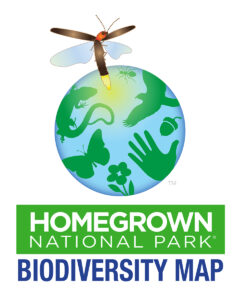 The HNP Biodiversity MAP is the only hub that captures the efforts of ALL individuals and organizations. It gives a dynamic visual representation of biodiversity regeneration and measures our collective impact. It recognizes the work of those planting native and removing invasives and inspires others to join their neighbors in the Homegrown National Park movement.
The HNP Biodiversity MAP is the only hub that captures the efforts of ALL individuals and organizations. It gives a dynamic visual representation of biodiversity regeneration and measures our collective impact. It recognizes the work of those planting native and removing invasives and inspires others to join their neighbors in the Homegrown National Park movement.
New Biodiversity MAP features also allow people to connect with the groups they are a part of - businesses, churches, community groups, etc. So now your group can measure its impact as you create individual native habitats!
Make Your Contribution Known
Add your new or existing plantings to the Biodiversity MAP here.
Haven't planted native yet? You can still get on the map and add a planting goal.
Have Your Organization Featured
Does your business, corporation, or other organization plant native and want to be featured in an upcoming post? Contact Us Here!
The Fine Print
The intricacies of designing, preparing, and caring for these varied landscapes go beyond what we can cover in this post. Each native planting initiative is unique, with distinct challenges and approaches, particularly when comparing projects from coast to coast. Always consult with local experts (find local nonprofits on our Resources) as well as our Keystone Native Plant Guides and Keystone Native Tree & Shrub Guides for the best plant selection for your region.
Denver, Colorado
(Population ~711,000)
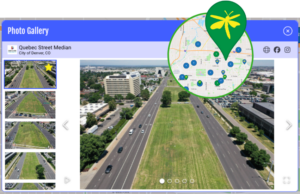
Did you know that the term “Xeriscape” was coined by the Denver Water Department? They now have a new word for everyone to learn: “ColoradoScape.” The City and County of Denver, which grows almost all of its plants, is steadily shifting its parks and garden beds toward plants that are either native to the Rocky Mountains or thrive in Colorado’s drier climate.
In a collaboration that spans all levels of government, the city is leveraging “uniquely Denver” landscaping as a strategy against climate change. While saving water is one massive benefit of this shift, Denver Parks and Recreation staff want to emphasize how much more there is to be gained through native landscaping.
It is equally important to the City of Denver and an increasing number of Denver residents to create habitats and corridors for native wildlife and forage areas for pollinators. These projects are designed to be equally attractive to those who pass by them as the wildlife that depends on them.
One of Denver’s priorities right now is converting its nonfunctional turf – think highway medians, steep slopes, or other spaces where turf grows but nobody uses it – to native landscapes.
An impressive example of this is the Quebec project that is currently underway. This project is converting ten acres of median on Quebec St, from thirsty Kentucky Bluegrass to a mix of over 40 species of native grasses, flowers, and shrubs. Once the plants, seeded in the fall 2023, are fully established, irrigation will be dialed back, with the goal of eventually turning it off. This will be a significant change from the 9 million gallons of water required each year to keep the grass green. Not only that, but the species mix replacing the turf will provide a fantastic habitat and forage for the city’s native pollinators and other wildlife.
More Denver Native Plantings
Dublin, Ohio
(Population ~49,000)
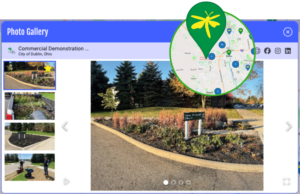
Rooted in its agricultural history, Dublin, a suburb of Columbus, focuses on keeping natural spaces available for its residents. The city has been adding native plants to its parks and gardens for more than 20 years, often in the form of prairies, and ensuring at least 50% native plants in smaller landscapes.
Dublin has both a Horticulture and Forestry Department with full-time and seasonal staff, responsible for managing the city's many street trees (primarily native) and expanding natural areas by planting over 100 new trees each year.
The city's efforts in maintaining native plantings and engaging with the community have been well-received. Dublin strongly emphasizes educating residents about the value of native plants through various programs, events focused on native plants and pollinators, and an annual Earth Day planting event.
Dublin is also looking to influence private businesses to adopt more pollinator-friendly landscaping by demonstrating how native plants can be used effectively in commercial settings. They've started by converting a 600-square-foot turf area into a showcase of native plants for commercial landscapes, aiming to promote biodiversity.
San Francisco, CA
(Population ~815,000)

Community engagement is critical to San Francisco’s shift toward planting native, a movement whose community advocacy is driven mainly by the Yerba Buena chapter of the California Native Plant Society (CNPS) and its collaboration with land management agencies and other non-profits. The efforts date back to the 1980s when Yerba Buena CNPS began working to preserve small pockets of original habitats and catalog native plants in remaining natural areas. In the 1990s, the National Park Service and the City’s Recreation and Parks Department created natural resource management programs to manage and work with community to steward San Francisco’s remnant natural heritage.
The City’s commitment to regenerating biodiversity deepened in 2017 with the adoption of a Biodiversity Resolution, setting the stage for a more comprehensive stewardship program. This transformation is supported by Reimagining San Francisco, an alliance initiated by the California Academy of Sciences, now including 40 organizations focused on enhancing the city's ecological health and making nature accessible to all residents.
One notable project is the renovation of the median in a section of Sunset Boulevard into an area rich with native plants. This project continued despite financial setbacks during the pandemic due to the support of the Yerba Buena CNPS. The boulevard is being reimagined as a corridor for both people and native wildlife with long-term hopes of tying together two of the most biodiverse areas in San Francisco: the Western end of Golden Gate Park and Lake Merced.
The community also engages in activities like bioblitz events that involve residents in documenting local biodiversity and showing the impact of the native plantings, fostering a sense of community ownership and support for these green spaces.
The influence of native plant advocacy is now extending to other city planning efforts, such as the introduction of native landscaping in public housing developments. This broader integration of nature into urban life reflects a commitment to improving biodiversity and residents' daily connection with nature.
“We want it to be people’s daily experience to wake up and hear birds;” a city official explained, “it should just be a natural part of life.
More San Francisco Native Plantings
Taghkanic, NY
(Population ~1,200)
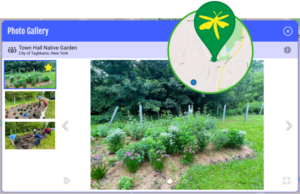
This small but ecologically mighty town is taking on biodiversity restoration with just as much zeal as its larger counterparts. Taghkanic is a Bronze Certified, soon-to-be Silver Certified, New York State Climate Smart Community (CSC), a program that helps local governments take action to reduce greenhouse gas emissions and adapt to a changing climate.
In January 2023, the town organized a community meeting featuring the pre-recorded What’s the Rush presentation by Doug Tallamy, co-founder of Homegrown National Park. Tallamy's message on the importance of native planting resonated deeply with both residents and town officials. Motivated by this event, Taghkanic quickly began creating a native pollinator garden outside the Town Hall, with plans for further expansion in the spring.
Additionally, as part of their CSC commitments, Taghkanic participates in the New York Department of Environmental Conservation's Trees for Tribs program. Since 2012, the town has planted nearly 300 native trees and removed numerous invasive species, establishing a riparian buffer along Taghkanic Creek. This initiative underscores the critical role of native trees and riparian buffers in sustaining healthy habitats and ecosystems for pollinators and wildlife.
More Taghkanic Native Plantings
Minneapolis, MN
(Population ~425,000)
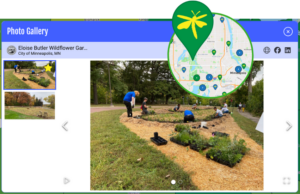
The Minneapolis Park and Recreation Board (MPRB) employs a comprehensive strategy to preserve and expand native plant habitat and habitat corridors across more than 4,600 acres of parkland and natural areas.
Home to the oldest public wildflower garden in the country, MPRB knows a thing or two about native species landscaping. Founded in 1907, the 16-acre Eloise Butler Wildflower Garden and Bird Sanctuary comprises a variety of naturalistically-styled garden areas, including wetlands, upland forests, and meadows.
Just last year, the Park Board installed a new native garden with over 11,000 plants at its entrance. They focused this particular garden site on pollinator-friendly plants, which we’re sure the 104 species of bees that call Eloise Butler home, including the endangered Rusty Patch Bumblebee, greatly appreciate!
This planting was part of the Turf to Pollinator Garden Project with Metro Blooms and Wilderness in the City. It was designed by MPRB, and the installation was a collaboration between MPRB, Metro Blooms Design+Build, Mississippi River Green Team, Conservation Corps of Minnesota & Iowa, and other volunteers.
MPRB also wants to show the public that native plant species are an attractive solution for a variety of landscapes. In fact, they can elevate an already high-class experience like the iconic Minneapolis Sculpture Garden. In 2016, MPRB began a massive renovation to make this public garden more sustainable, focusing on stormwater catchment and runoff. That project included establishing several acres of native meadow, which aid in filtering pollutants from the runoff it absorbs. To make this impressive update a reality, the Minneapolis Sculpture Garden received support from the Mississippi Watershed Management Organization, and its partner, the Walker Art Center, which curates the art in the garden.
Visible from I-94, this meadow prominently showcases the sculpture garden and the benefits of native species landscaping, which promotes ecological sustainability and biodiversity in urban settings.
Take a virtual tour of Water Works at Mills Ruins Park, another impressive display of native plants, many with medicinal and edible properties: Owámniyuomni ed Wathóthoka kiŋ/Plants of Owamniyuomni: A Dakota Language Audio Tour
More Minneapolis Native Plantings
Afton, MN
(Population ~3,000)
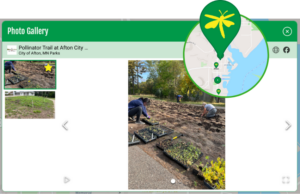
Meet the first city to put a photo on the HNP Biodiversity MAP! Dedicated to protecting its natural and rural character, Afton wants to show its residents all the different ways planting native can look like.
In 2021, the Afton Parks Committee began a demonstration garden surrounding its City Hall, including a native pollinator garden, a short-grass prairie, and a woodland area with native trees and shrubs. The project resides along a popular bike trail and offers passersby plenty of signage about the buzzing ecosystems around them.
Inspired by the wild success of their first project, Afton has big visions for the rest of its open space. They’re converting an underutilized parcel of city property called Meadow Ridge into 4.5 acres of pollinator-friendly habitat (establishment has been slow because of drought, but it’s coming along!). Starting this spring, they’ll also begin restoring a 1-acre portion of a poorly vegetated flood levee into a native prairie.
Afton also recently partnered with a local conservancy to convert a portion of a newly acquired 30-acre preserve back to native prairie, while the rest will remain a forested wetland habitat. Why so much prairie, you ask? They’re one of the continent’s most endangered habitats.
Common Threads
Despite their differences in size, location, history, and culture, these towns and cities share several key strategies that contribute to the success of their environmental projects:
- The Driving Force: At the heart of most of these stories is a dedicated individual or a small group who championed these initiatives, providing the vision and drive necessary to bring these projects to fruition.
- Striking the Right Balance: These cities know how to strike the balance between native landscapes and the current (but changing, if we have anything to do with it) social perception of what a maintained landscape should look like. They’re strategic about where they put their most “wild” areas and where they choose to accessorize with ornamentals.
- Communication Is Key: Engaging and educating the community is a priority. These cities employ various methods to connect with residents, from volunteer programs and social media to informational signage and public meetings. The effort to inform and involve the community not only fosters a sense of ownership but also builds broader support for these green initiatives, as increased awareness about the benefits of native plantings leads to greater community backing.
But How Do You Pay For It?!
The featured cities employ an array of strategies to secure funding for their native planting initiatives. While some have successfully integrated the costs of these projects into their annual city budgets, others have turned to external sources such as grants, the backing of non-profit organizations, and donations. In many cases, a hybrid approach, tapping into multiple funding streams, has proven to be the most effective way to support these projects that benefit the environment as well as the community members.
Conclusion
We hope these examples prove that no matter how big or small your town or city is, it can become a shining example of stewardship. It’s also important to remember that a dedicated individual or small group of individuals is responsible for most of these success stories. All it takes is a spark to help start the movement in your hometown - that spark could be you!
We thank everyone involved in this incredible show of leadership, and lighting the way for other cities to join the Homegrown National Park movement!
Action Steps
(Don’t get left behind!)
If You Are a City Employee
- If your city is already planting native, contact us to help get on the HNP Biodiversity MAP and possibly be featured in an upcoming story.
- Show What’s the Rush, Doug Tallamy’s 48-minute biodiversity presentation, to your community members to inspire action.
- Consult with local experts for the best native plant selection for your region. You can find local nonprofits on our Resources, along with our Keystone Native Plant Guides and Keystone Native Tree & Shrub Guides.
- Connect with your closest Native Plant Society or Wild Ones chapter to learn more about planting native.
If You Are a Community Member
- If your city is already planting native, first and foremost, give them a big round of applause! Then, ask them to contact us to help get on the HNP Biodiversity MAP and possibly be featured in an upcoming story.
- Find the correct department in your town/city and ask them what their native planting goals are. Forward them this article for inspiration!
- Get involved with your local parks committees to stay current on projects and advocate for native species planting.
- More hands make less work! Be on the lookout for volunteer opportunities to help install and maintain native gardens in your area.
Calling All Business, Corporations and Other Organizations
Make Your Contributions Known!
If your organization plants native, we'd love to help you get on the HNP Biodiversity Map and possibly feature you in an upcoming story! We’re still at the dawn of this movement, so there's an opportunity to be the "first" in your community, lighting the way for others to join you.
Contact us if you are an owner/leader or have a connection with someone in an influential role in any of the following:
- Business or Corporation
- Town or City
- Non-profit
- Place of Worship
- Tribal Entity
- Golf Course
- Garden Group or Native Plant Group
- Land Trust
- Other?
Thank you to the following for your help in creating this story:
- Denver: Julie Lehman, Ian Schillinger-Brokaw, Kenton Seth - Paintbrush Gardens
- Dublin: Scott Moncrief
- San Francisco: Jennifer Cooper, Peter Brastow, Robert Hall
- Taghkanic: Betsy Albert, Robin Randisi, Heather McKenna Pardo
- Minneapolis: Metro Blooms, Susan Wilkins, Kait Ryan, Florkime Paye
- Afton: Ron Moorse, Afton Parks Committee
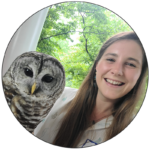
Grace Hassler recently graduated from the University of Pennsylvania with a Master of Environmental Studies degree focusing on local land conservation. She loves storytelling and finding ways to connect the public with important environmental research in a way that is interesting and understandable. In her free time, you can find Grace outside participating in one of her many hobbies – whitewater kayaking, birding, mountain biking, photography, rock climbing – you name it!

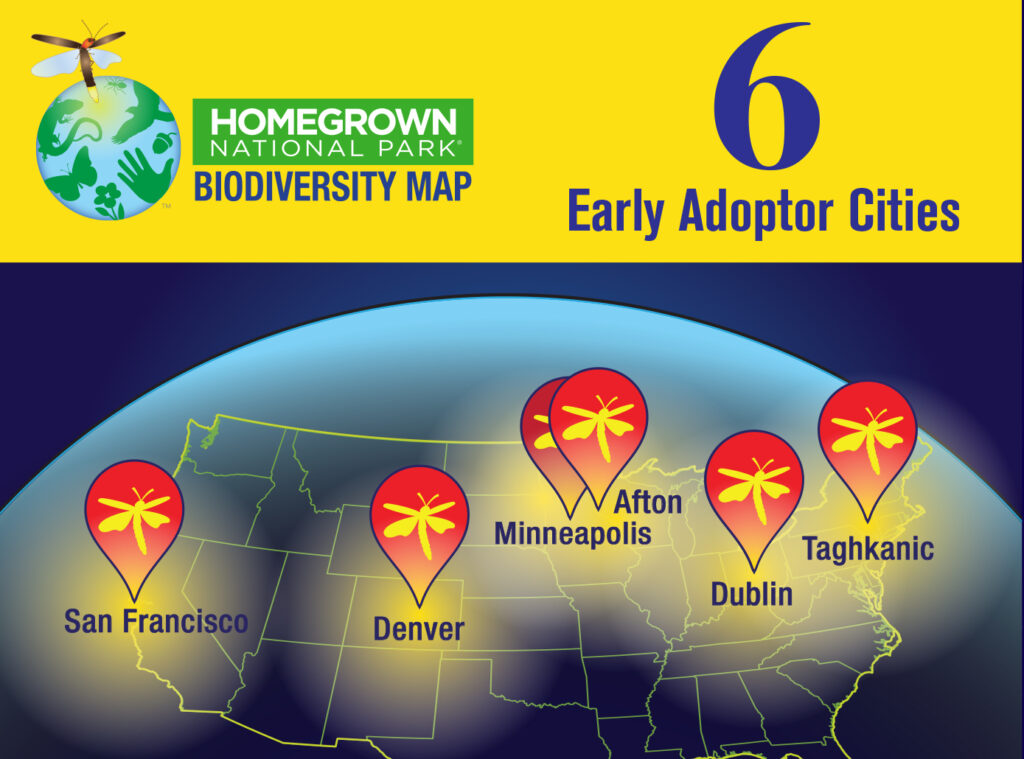
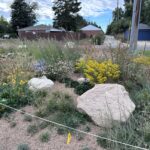
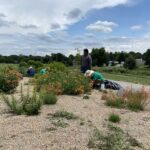
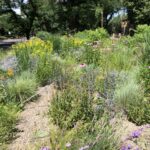
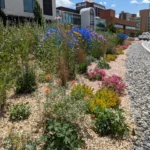
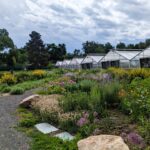
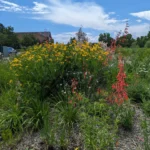
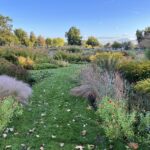
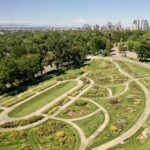

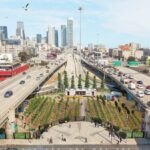
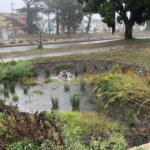
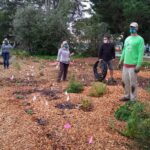
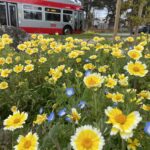
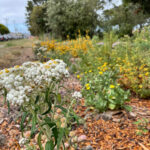
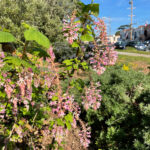
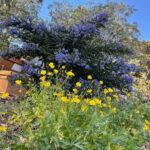
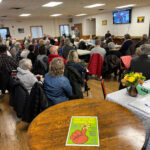
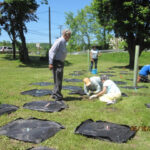

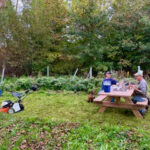
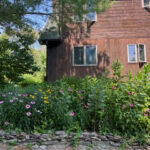
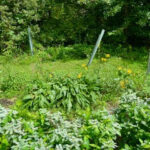

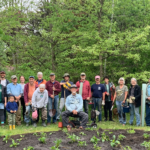

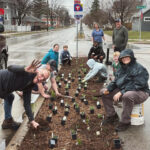
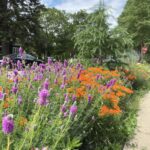
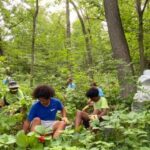
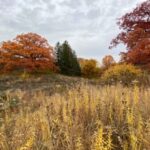
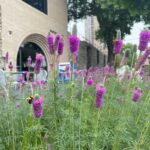
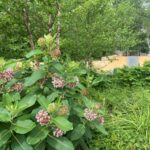
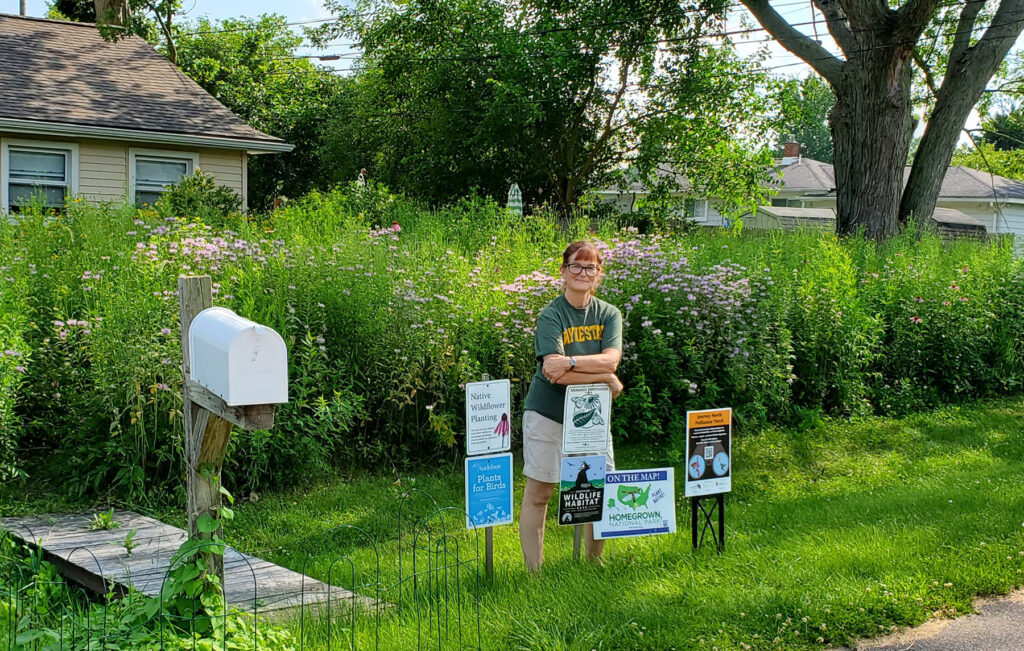
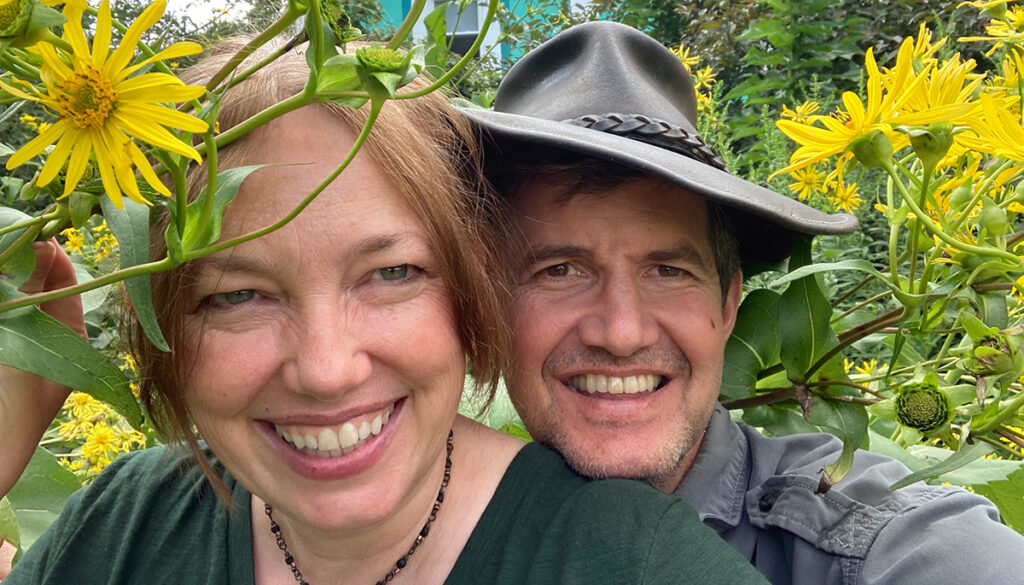
One of the things to point out about Afton MN, is that they are located within the Federally Endangered Rusty Patched Bumblebee High Priority Zone. This means that based on the FWS Rusty Patched Bumblebee Map, this endangered species “presence can be assumed.” This is awesome the city is doing a great job in conservation in an area for RPBB.